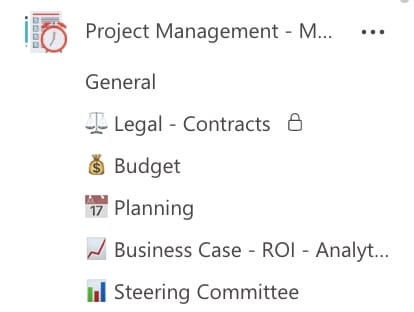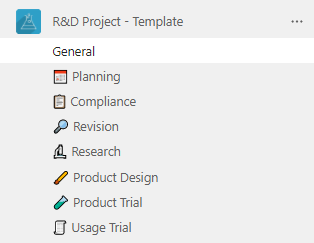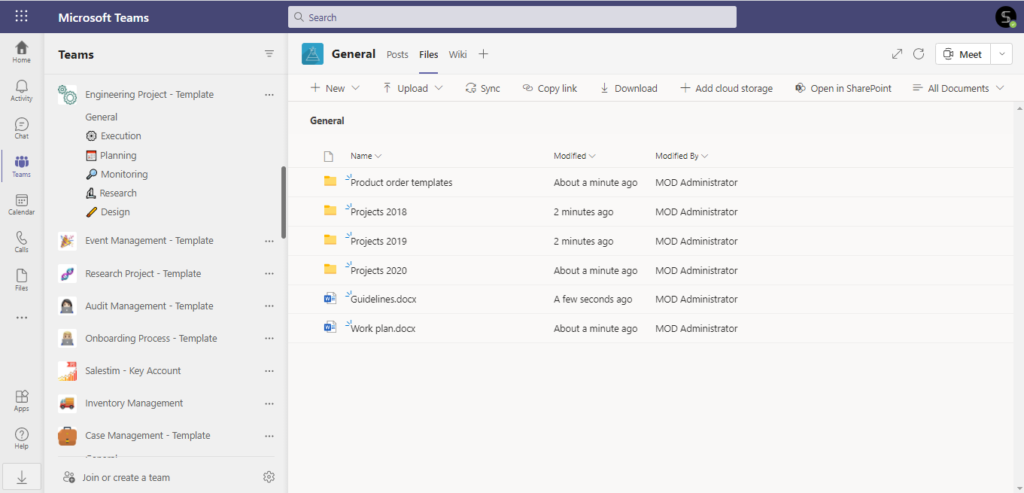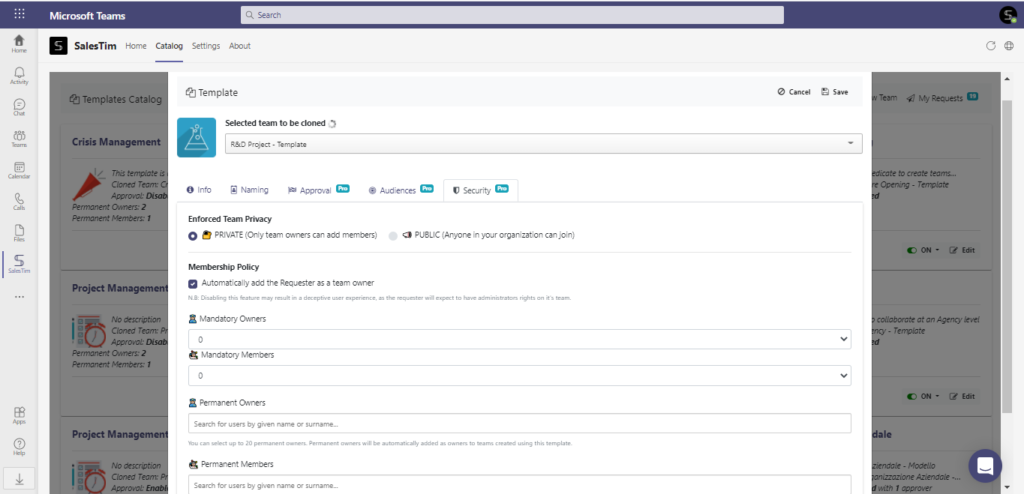Today research and development is undergoing various transformations, shifting from traditional siloed operations to a collaborative mode of working. Now R&D teams are working jointly with partners, customers, industry specialists, and even competitors to accelerate innovation and drive better results. Given the nature of research and development initiatives, R&D teams require a secure collaboration platform for safe communication and teamwork.
In this article we cover key Microsoft Teams capabilities and how to use them for research and development.
Research and development collaboration challenges
Pace of innovation
In today’s business environment organizations are seeking ways to accelerate their growth by adopting innovative technology and actively investing in research and development. The pace of modern innovation dictates new rules for R&D teams, forcing them to move from traditionally siloed mode to collaborative operations.
Compliance and regulations
Research and development activities entail following compliance rules, good practice guidelines, and standards set up by governments. Therefore, R&D teams require a system for monitoring and ensuring regulatory compliance.
Protection of highly classified information
Due to the highly confidential nature of research and development work, collaboration with external stakeholders can raise information security concerns. In order to address this challenge, R&D teams require a collaboration platform that enables safe information sharing and prevents external parties from accessing sensitive content.
Knowledge management
Research and development teams often reuse existing knowledge and data for new initiatives. Knowledge management is an important indicator of organizational efficiency and innovation. At the same time, in many companies, large amounts of high-value scientific data are stored in dispersed locations and systems, creating accessibility issues, affecting data integrity, and consequently, hindering knowledge management.
How Microsoft Teams empowers research and development teams
Secure collaboration
When it comes to collaboration in research and development, one of the key concerns is protecting intellectual property and other confidential information. Due to multiple Microsoft Teams security features, your R&D teams can safely collaborate with both internal and external players.
Sensitivity labels
There are two types of sensitivity labels in Microsoft Teams.
The first one is assigned to teams in your tenant. For example, when creating an R&D team, you can indicate that the team you’re creating is private. This way you ensure that guest users won’t be able to join the team.

Sensitivity labels can also be applied to your files. They let you classify and protect your data by encrypting and marking your content, protecting data in third-party apps and services, preventing external sharing and downloads, and more.

By enabling sensitivity labels, you can make sure your confidential data stays protected.
Learn more about sensitivity labels.
Information barriers
Information barriers prevent specific groups of people within an organization from communicating with one another. You may want to apply this policy if, for example, your research team is only allowed to call or chat with a product development team.
Private and shared channels
If your R&D team is collaborating with external members inside Teams, they can still collaborate privately in private channels. Moreover, you no longer need to invite guest members to the entire team. Instead, you can leverage shared channel capability. Your guest users will only be able to see conversations and have access to files shared, specifically in this channel.

Learn more about shared channels with Microsoft Teams templates.
Secure meetings
To prevent external users from accessing your meetings in Microsoft Teams, you can leverage Lobby capability. You can enable/disable it in the Microsoft Teams admin center.
Your external users will be redirected to a virtual lobby where they will need to wait for admission. If you’re concerned about accidental leaks of information during video meetings, you may choose to disable the screen-sharing capability in the admin center.

Centralized location for file storage
Your research and development teams can use Microsoft Teams as a centralized database. Each new team comes with its own SharePoint document library that, with the right governance settings, can be accessed only by its members.
It’s a secure storage space where you can keep your scientific data and then access it at any time for reuse of knowledge.
Additionally, your employees can work together on any file: co-author, add and track changes, as well leave comments and have discussions right in the document.
Integrations
Your R&D teams may require additional tools for project, task, and employee management, design, and other use cases. With Microsoft Teams, you can integrate any native, third-party, or line-of-business application into Teams environment.
Here are some examples of apps that can be beneficial for your R&D teams:
Planner
Planner is a task management tool that allows you to create, categorize, label, and assign tasks, add checklists, attach files, and track the progress.
Your research and development teams can use Planner for project management. Additionally, you can assign tasks related to monitoring compliance with policies and regulations, conducting regular checks, etc.
OneNote
You may want to use OneNote as a knowledge repository for your R&D teams. In OneNote, you can add documents, images, videos, pdfs, audio, emails, and other files.
Whiteboard
Your team can have productive virtual brainstorming sessions with the Whiteboard app. Use it the same way as you would use a regular whiteboard. Besides, all team members can contribute in real-time.
Microsoft Teams template for
Research and Development teams
One of the best practices for using Microsoft Teams is to create a separate team for each repetitive collaborative process. That can be project management, account management, product launch, different campaigns, deals, etc. Similarly, for each new research and development project your employees undertake, the best practice will be to create a dedicated team.
In this way, your team can have structured conversations dedicated exclusively to the project they are working on. In addition, they will have a separate document library that will be accessible only to the members of the team.
At the same time, creating a new team from scratch can be time-consuming. On top of that, you need to make sure there are strict governance rules in place so that all the data stored in the team stays protected.
This is where Microsoft Teams collaboration templates come in. You can create only one team for your R&D projects, build the required channels, add files and tabs with apps, owners, and members, and then use this original team as a template to create fully provisioned teams in just a few clicks.
You may also want to upload all your scientific data and R&D knowledge to the template. As a result, each time a new team is created from the template, all the files and folders will be automatically copied in the document library. Your teams will no longer need to look for documentation across different locations to reuse knowledge.
Additionally, you can establish strong governance policies to protect sensitive information during collaboration.
Let’s see how you can use R&D Project template for project management.
R&D Project template
Channels
You can structure your R&D project teams by creating channels that will cover all the steps of the research and development process. You can use the following channel names as examples:

- Research
- Planning
- Compliance
- Product Design
- Product Trial
- Usage Trial
- Revision
Files and tabs
Upload all the documentation that can come in handy for your R&D teams. For instance, that can be all the previous research, work plans, guidelines, compliance rules and regulations, audit documentation, product order templates, protocols, etc.
You can also add apps that your research and development teams might use. For example, you can pre-build Planner with standard tasks for project management. You can also add any third-party app or line-of-business application.

Governance policies
When your original team is ready, you can use it to create your R&D Project template. During the template creation process, you can configure governance policies that answer your organization’s needs.
You can set up naming policies for your template. In this way, all R&D teams based on this template will follow the same naming rules.
By implementing an approval workflow, you will ensure that before creating a new team from the template users will have to submit an approval request.
You can also set up audience targeting so that only specific groups of users could see your templates. For instance, only employees who work in the research and development department.
Moreover, you may want to enforce team privacy for your Research and Development Project template to protect sensitive information shared in R&D teams.

Learn more about Microsoft Teams Collaboration templates governance policies.
Interested in exploring Microsoft Teams templates for research and development projects? Then schedule a demo with us to find a solution tailored for your use cases.
